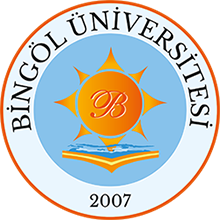KERATİN VE KİTOSAN ÖZELLİKLİ BİYO-MATERYALLERİN MEYVE RAF ÖMRÜ ÜZERİNE ETKİSİ
Özet
ÖZET Bu çalışmada amaç hasat sonrası olgunlaşması artan ve bunun neticesinde raf ömrü azalan klimakterik (muz) ve klimakterik olmayan (çilek) iki farklı meyvenin kitosan ve keratin özellikli biyo-materyalin kullanılması ile olgunlaşmaları ve raf ömründeki değişimi tespit etmektir. Bu amaca ulaşmak için; olgunlaşma ile değişen ağırlık kaybı, renk değişimi, yağ asit profili, fenolik ve flavanoit içeriği, reaktif oksijen türlerinin miktarı, lipid peroksidasyon seviyesi ve antioksidan enzimlerden süperoksit dismutaz, peroksidaz ve katalaz aktivitelerindeki değişimler incelenmiştir. Kitosan ticari bir firmadan temin edilirken keratin kaynağı olarakta koyun yünü ekstrakt edilerek elde edilmiştir. Çalışmada her iki biyo-materyal için ön denemeler yapılmış ve kitosan için %1, keratin için ise %2 konsatrasyon belirlenmiştir. Çalışmada kontrol, %1 kitosan, %2 keratin ve %1 kitosan + %2 keratin olmak üzere 4 farklı grupta çalışmalar yapılmıştır. Özellikle tek başına kitosan her iki meyve de ağırlık kaybı, MDA oranını ve reaktif oksijen türlerinin miktarlarını kontrole göre önemli derecede azaltmıştır. Lipid peroksidasyon oranlarında her iki bitkide de kitosan ve keratine bağlı olarak azalma gözlenmiştir. Reaktif oksijen türlerinden hidrojen peroksit ve süperoksit anyon seviyeleri muzda her üç uygulamada da azalırken çilekte gruplar arası farklılıklar tespit edilmiştir. Kitosan antioksidan enzimlerden süperoksit dismutaz, katalaz ve peroksidaz aktivitleri özellikle muz bitkisinin dış kısmında önemli oranda artarken çilek ve muz iç kısmında ise gruplar arası bazı değişimler meydana gelmiştir. Yağ asid profilinde özellikle tek başına kitosan her iki meyvede önemli oranda değişimlere neden olmuştur. Tüm sonuçlar birlikte değerlendirildiğinde özellikle kitosanın raf ömrü üzerinde olumlu etkileri olduğu söylenebilir. ABSTRACT In this study, the use of chitosan and keratin-specific bio-materials to delay ripening and extend the shelf life of climacteric (banana) and non-climacteric (strawberry) fruits, whose post-harvest maturation increases and whose shelf life decreases as a result. To achieve this aim; Weight loss, color change, fatty acid profile, phenolic substance content, flavonoid content, amount of reactive oxygen species, lipid peroxidation level and changes in antioxidant enzymes superoxide dismutase, peroxidase and catalase activities with maturation were investigated. While chitosan was procured from a commercial company, it was obtained by extracting sheep wool as a source of keratin. In the study, preliminary tests were made for both biomaterials and 1% concentrations for chitosan and 2% for keratin were determined. In the study, studies were carried out in 4 different groups as control, 1% chitosan, 2% keratin and 1% chitosan + 2% keratin. Keratin application alone significantly reduced the weight loss rate in both fruits compared to the control. Lipid peroxidation rates were decreased by chitosan and keratin in both plants. While hydrogen peroxide and superoxide anion levels, which are reactive oxygen species, decreased in all three treatments in banana, differences between groups were detected in strawberry. Superoxide dismutase, catalase and peroxidase activities of antioxidant enzymes increased significantly especially in the outer part of the banana plant, while intergroup changes occurred in the inner part of strawberry and banana. Chitosan alone caused significant changes in the fatty acid profile of both fruits. When all the results are evaluated together, it can be said that especially chitosan has positive effects on the shelf life.
Koleksiyonlar

DSpace@BİNGÖL by Bingöl University Institutional Repository is licensed under a Creative Commons Attribution-NonCommercial-NoDerivs 4.0 Unported License..













